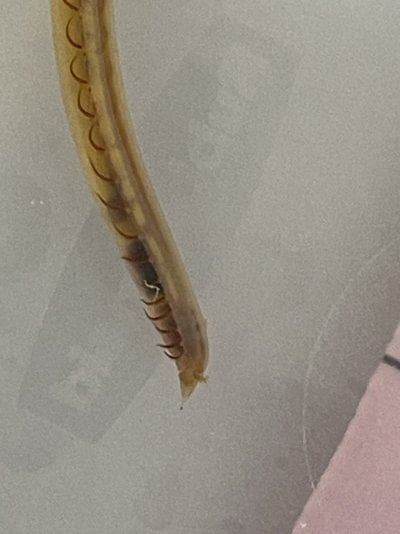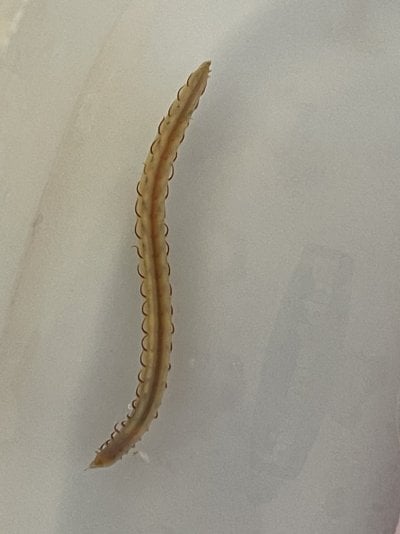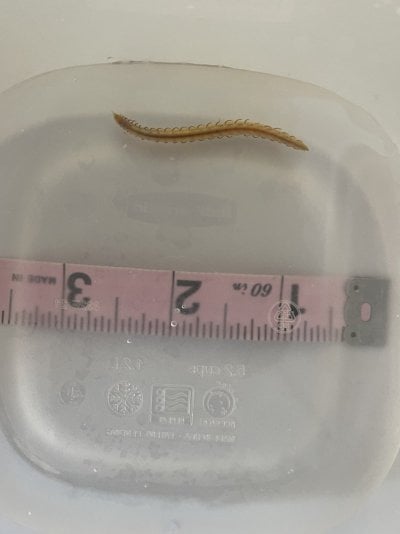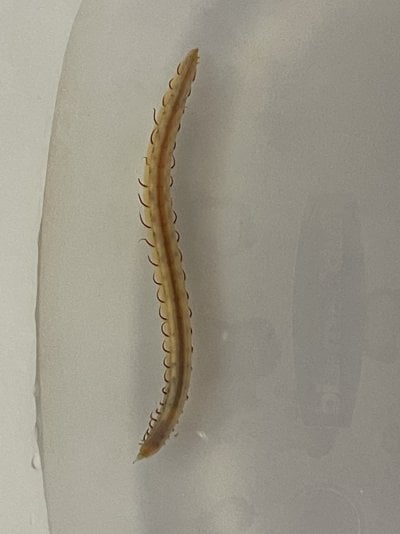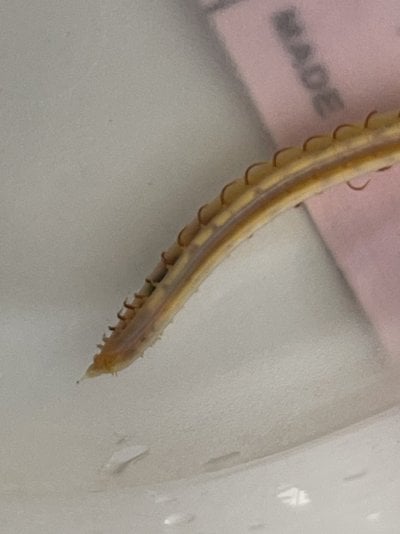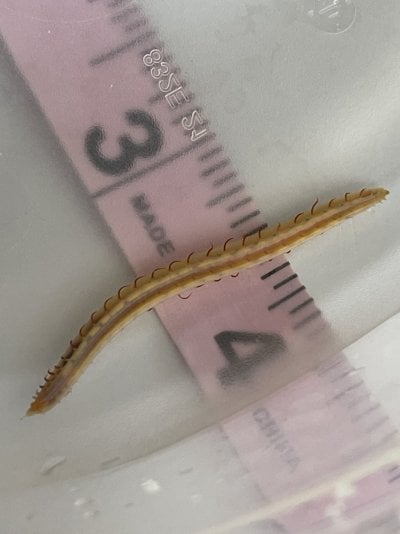Hello all!
I have done some independent research and was not able to come up with much. Can anyone help me ID this sand dwelling worm? He was discovered when I was turning the sand bed and he was removed. I will attach a video of him in the tank and a photo of him removed in the yellow cup. Thanks!
Thalia

I have done some independent research and was not able to come up with much. Can anyone help me ID this sand dwelling worm? He was discovered when I was turning the sand bed and he was removed. I will attach a video of him in the tank and a photo of him removed in the yellow cup. Thanks!
Thalia





